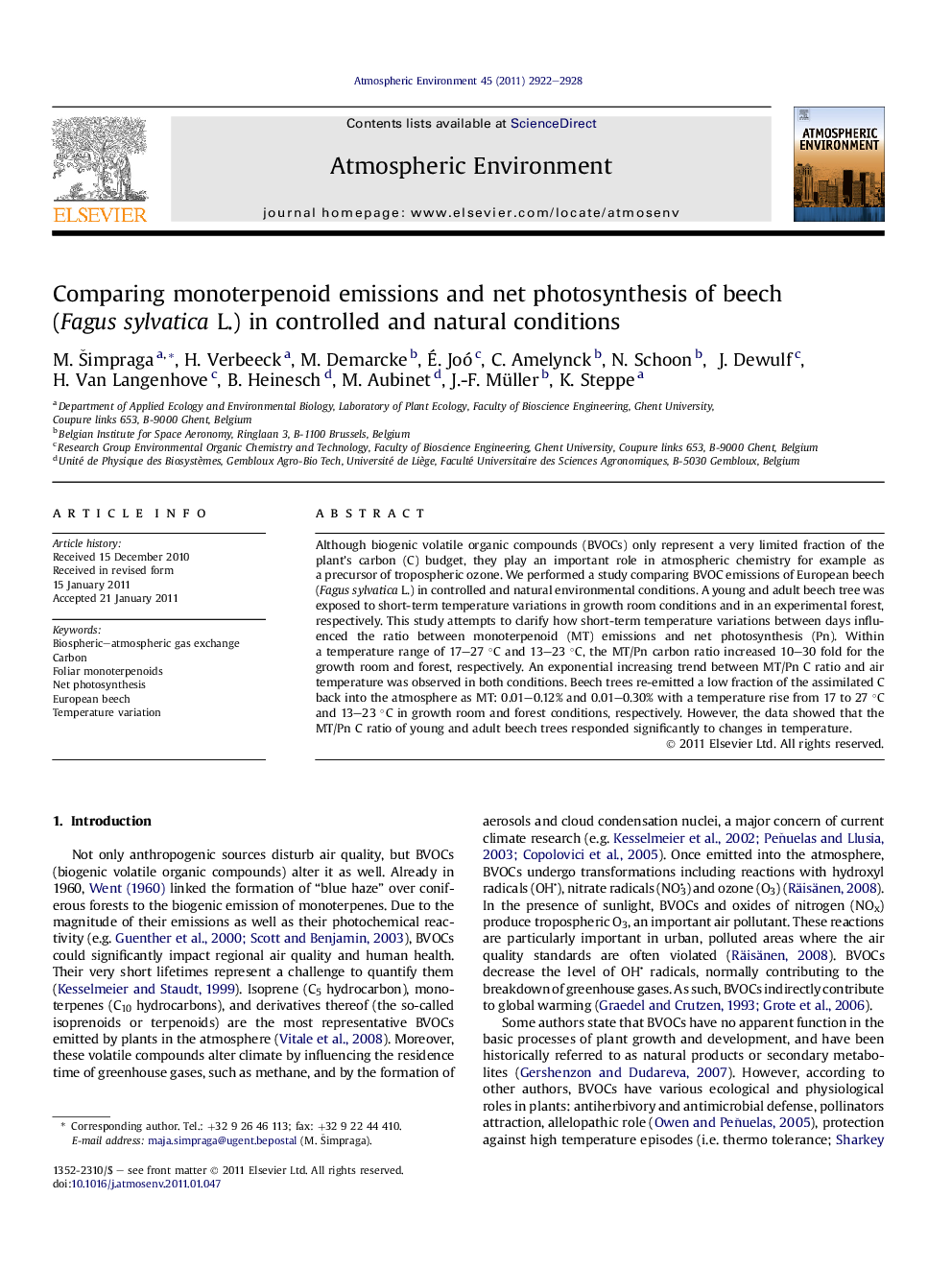| Article ID | Journal | Published Year | Pages | File Type |
|---|---|---|---|---|
| 4440033 | Atmospheric Environment | 2011 | 7 Pages |
Although biogenic volatile organic compounds (BVOCs) only represent a very limited fraction of the plant’s carbon (C) budget, they play an important role in atmospheric chemistry for example as a precursor of tropospheric ozone. We performed a study comparing BVOC emissions of European beech (Fagus sylvatica L.) in controlled and natural environmental conditions. A young and adult beech tree was exposed to short-term temperature variations in growth room conditions and in an experimental forest, respectively. This study attempts to clarify how short-term temperature variations between days influenced the ratio between monoterpenoid (MT) emissions and net photosynthesis (Pn). Within a temperature range of 17–27 °C and 13–23 °C, the MT/Pn carbon ratio increased 10–30 fold for the growth room and forest, respectively. An exponential increasing trend between MT/Pn C ratio and air temperature was observed in both conditions. Beech trees re-emitted a low fraction of the assimilated C back into the atmosphere as MT: 0.01–0.12% and 0.01–0.30% with a temperature rise from 17 to 27 °C and 13–23 °C in growth room and forest conditions, respectively. However, the data showed that the MT/Pn C ratio of young and adult beech trees responded significantly to changes in temperature.
► Comparison of indoor and outdoor measurements of monoterpenoids and photosynthesis. ► Monoterpenoid/photosynthesis showed exponential relationship with air temperature. ► Young and adult beech responded similarly to the changes in air temperature.
